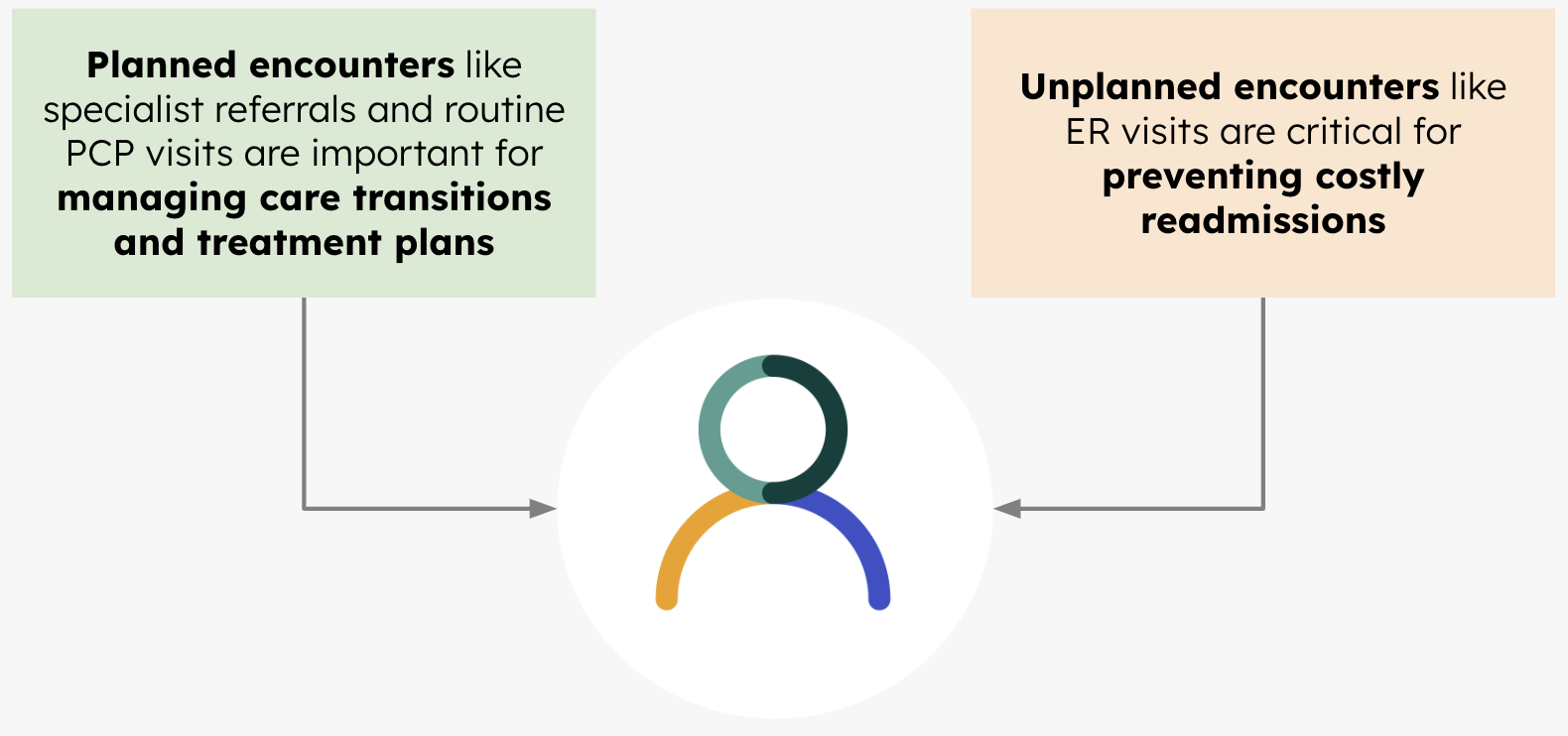Particle Signal
In the complex landscape of healthcare, timely information is paramount. Particle Signal is your proactive intelligence layer, providing real-time, actionable insights into critical patient care events. It empowers healthcare organizations to move from reactive to proactive care, ensuring you have the information you need, precisely when you need it.
Signal continuously monitors national health information networks (HINs) like Carequality, Commonwell, and eHealthExchange, and state/regional Health Information Exchanges (HIEs). When a significant clinical event occurs for a patient in your care, Signal immediately delivers a focused alert to your systems, allowing for swift and informed intervention.
With Particle Signal, you can:
- Improve Care Coordination: Stay informed about patient encounters across the entire healthcare ecosystem.
- Reduce Readmissions: Proactively intervene post-discharge with timely follow-ups and support.
- Optimize Value-Based Care: Leverage real-time data to meet quality metrics and manage patient populations more effectively.
- Enhance Patient Engagement: Reach out to patients at critical junctures of their care journey.
How Signal Works
Particle Signal integrates seamlessly into your existing workflows, delivering a continuous stream of relevant patient updates.
-
Enroll patients: You register your patients with Particle and subscribe them to Signal.
-
Particle monitors the network: Our robust infrastructure actively monitors a vast network of HINs and HIEs for your subscribed patients.
-
Particle detects critical clinical events: When a significant event (e.g., an admission, discharge, new encounters, etc.) occurs for a subscribed patient, Signal intelligently detects it.
-
Alerts are sent via webhook: A focused, actionable alert is immediately delivered to your pre-configured webhook endpoint.
-
Integrate alerts into your workflows: Your systems receive the alert, which can then trigger internal workflows, notifications, or data retrieval processes to access richer clinical context.

Key Features & Capabilities
Particle Signal provides robust features designed to give you precise control and actionable information:
- Real-time Notifications: Receive immediate alerts as events unfold, enabling swift action.
- Contextualized Clinical Data: Alerts often include direct links or identifiers to retrieve rich clinical context.
- Customizable Patient Cohorts: Subscribe specific patient populations to Signal, tailoring the alerts to your precise needs.
- Integration with Existing Workflows: Designed to seamlessly push data into your current systems via webhooks, minimizing disruption.
Types of Signal Alerts
Particle Signal delivers focused alerts for various critical patient events and data availability:
- Transition Alerts (NEW!)
Notifies you of critical transitions in a patient's care (admits, discharges, and transfers) which often mark high-risk period or a pivotal points in their care journey. These are designed to highlight shifts that require immediate attention for care coordination. - New Encounter Alerts
Signals that new clinical insights and evidence of a recent patient encounter, reflected in documentation like a progress note or visit summary, have been identified for a patient. - Discharge Summary Alerts
Notifies you when a discharge summary document becomes available for a patient post-hospitalization. - Referral Alerts
Informs you when a new referral document has been identified, potentially from or to one of your specified referral organizations.
Getting Started with Particle Signal
Ready to transform your patient care coordination? Setting up Particle Signal is straightforward.
Next Steps:
- Visit our Setting Up Signal page for a step-by-step guide on configuring your account and subscribing patients.
- Have a unique use case or specific questions? Contact us – our team is ready to help you unlock the full potential of Particle Signal.
Updated 5 months ago
